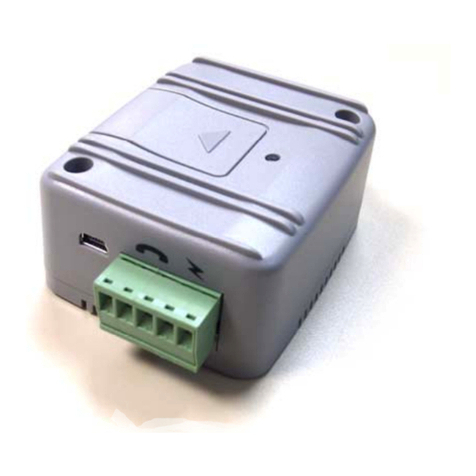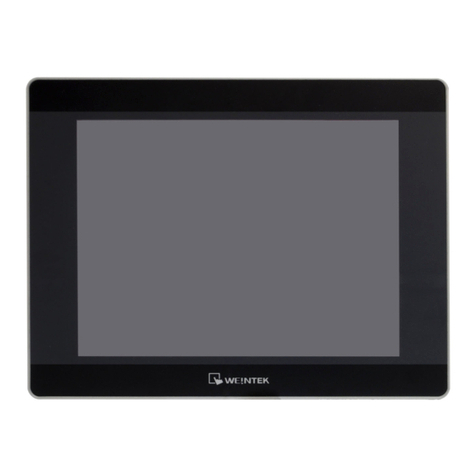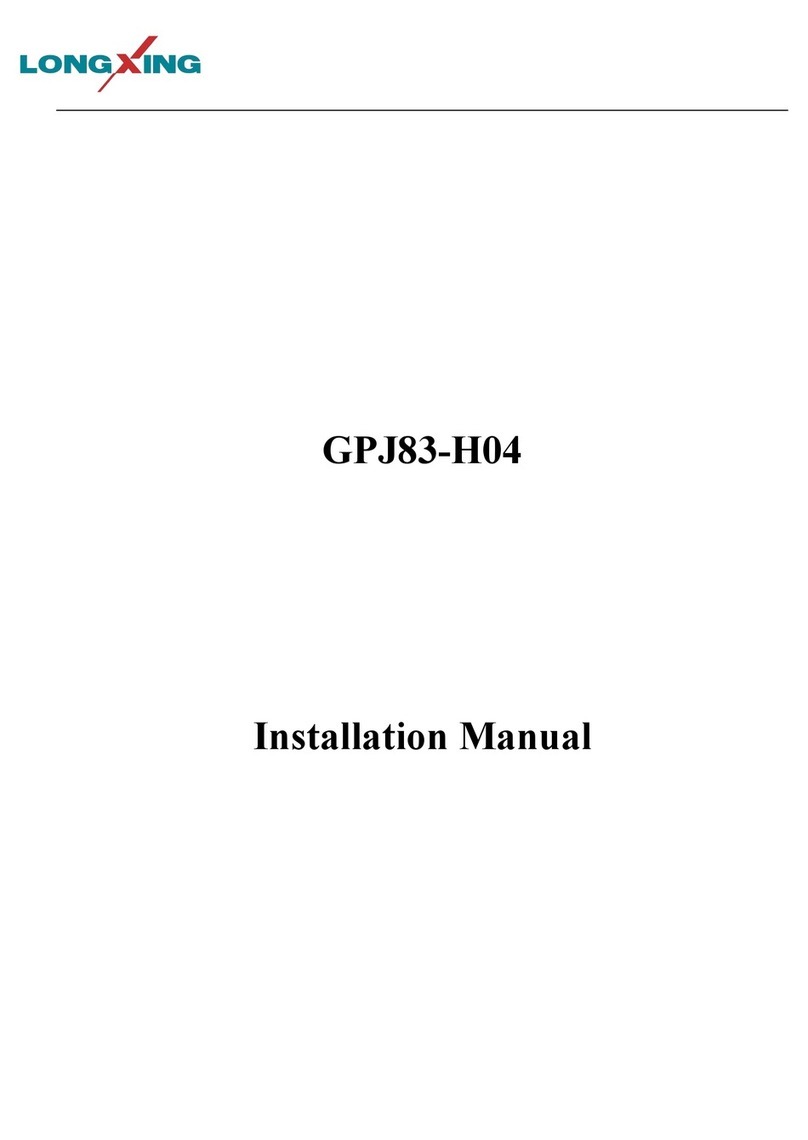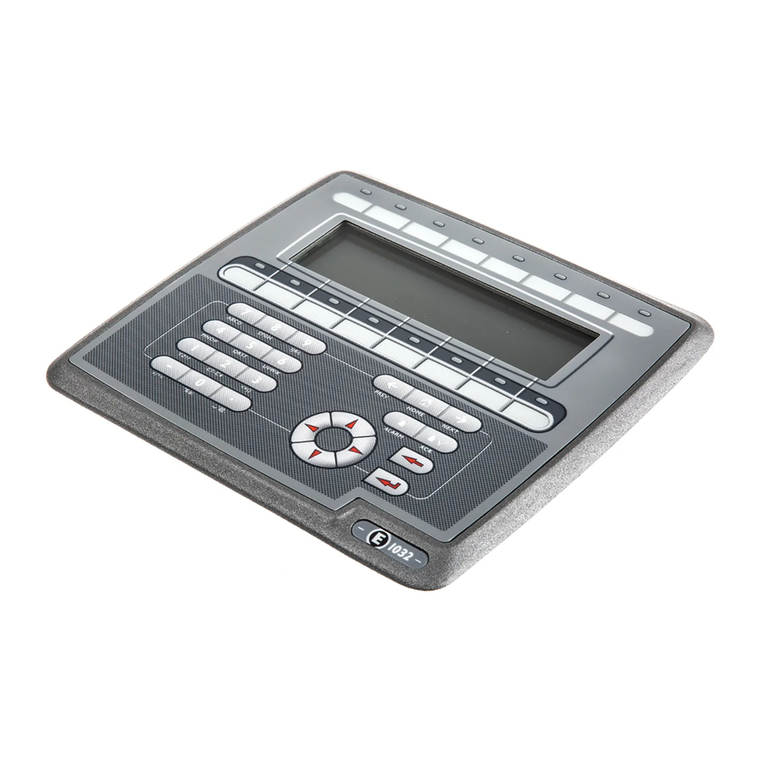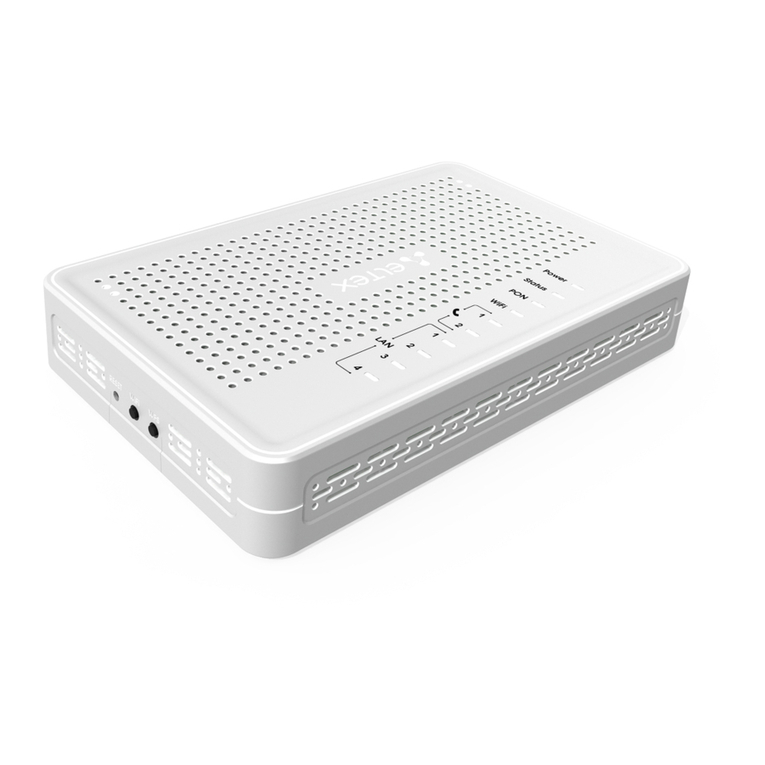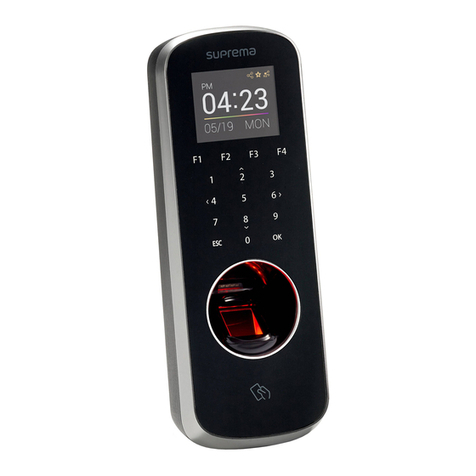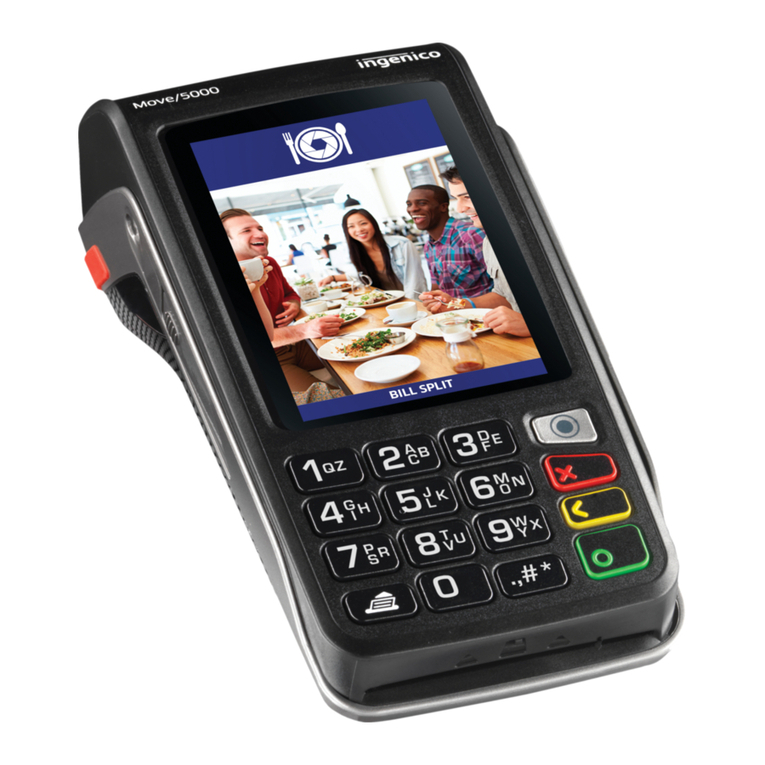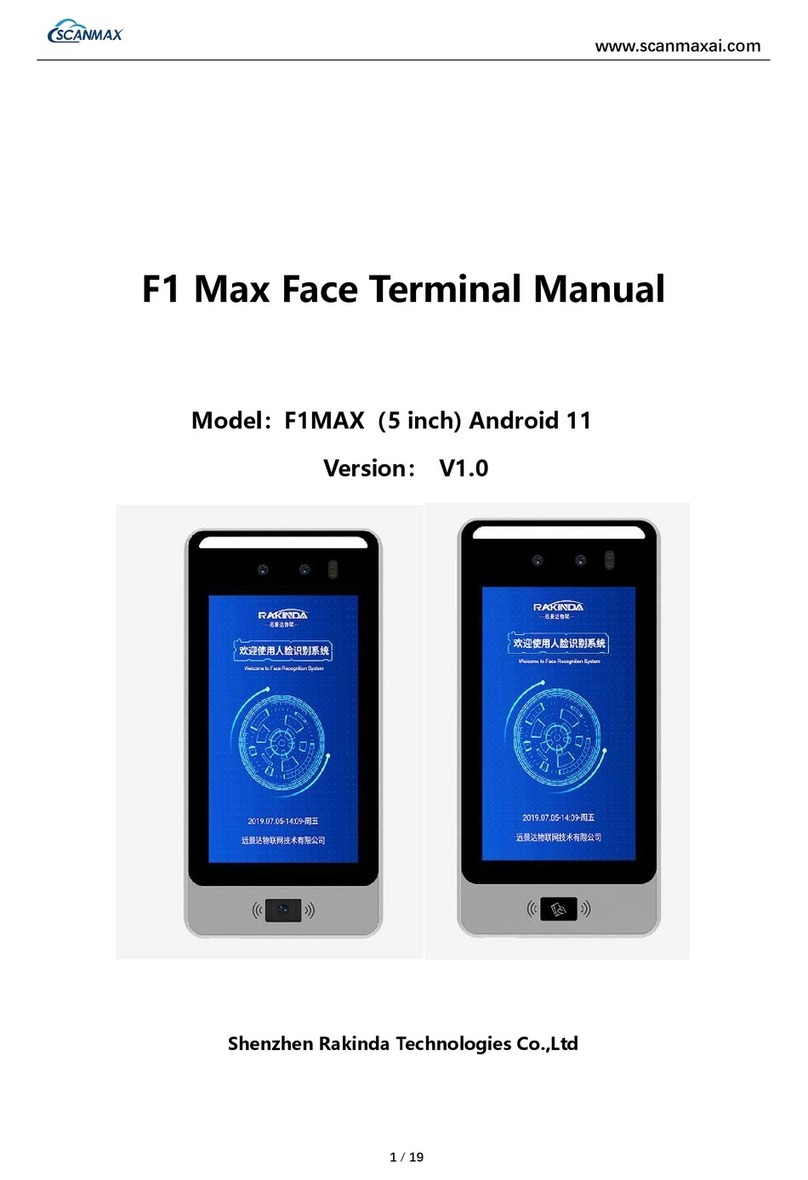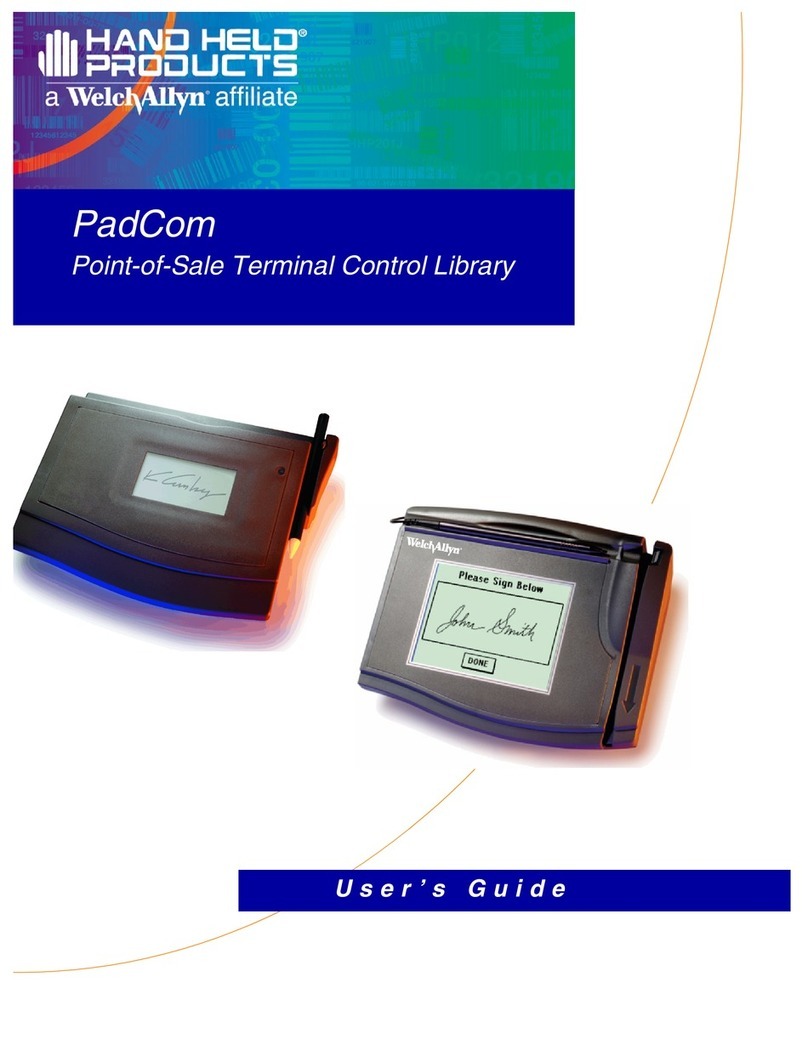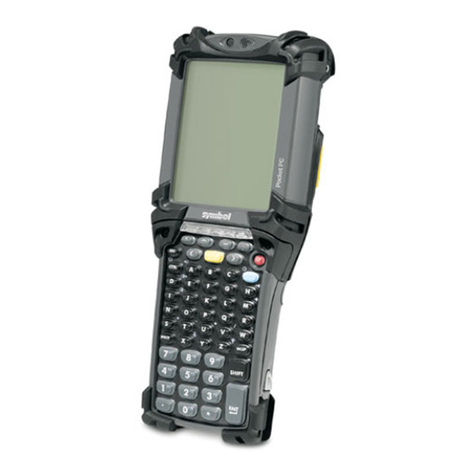Cinterion MC55i User manual

MC55i Terminal
Version: 01.201a
DocId: MC55i_Terminal_HD_v01.201a
Hardware Interface Description

GENERAL NOTE
THE USE OF THE PRODUCT INCLUDING THE SOFTWARE AND DOCUMENTATION (THE "PROD-
UCT") IS SUBJECT TO THE RELEASE NOTE PROVIDED TOGETHER WITH PRODUCT. IN ANY
EVENT THE PROVISIONS OF THE RELEASE NOTE SHALL PREVAIL. THIS DOCUMENT CON-
TAINS INFORMATION ON CINTERION PRODUCTS. THE SPECIFICATIONS IN THIS DOCUMENT
ARE SUBJECT TO CHANGE AT CINTERION'S DISCRETION. CINTERION WIRELESS MODULES
GMBH GRANTS A NON-EXCLUSIVE RIGHT TO USE THE PRODUCT. THE RECIPIENT SHALL NOT
TRANSFER, COPY, MODIFY, TRANSLATE, REVERSE ENGINEER, CREATE DERIVATIVE WORKS;
DISASSEMBLE OR DECOMPILE THE PRODUCT OR OTHERWISE USE THE PRODUCT EXCEPT
AS SPECIFICALLY AUTHORIZED. THE PRODUCT AND THIS DOCUMENT ARE PROVIDED ON AN
"AS IS" BASIS ONLY AND MAY CONTAIN DEFICIENCIES OR INADEQUACIES. TO THE MAXIMUM
EXTENT PERMITTED BY APPLICABLE LAW, CINTERION WIRELESS MODULES GMBH DIS-
CLAIMS ALL WARRANTIES AND LIABILITIES. THE RECIPIENT UNDERTAKES FOR AN UNLIMITED
PERIOD OF TIME TO OBSERVE SECRECY REGARDING ANY INFORMATION AND DATA PRO-
VIDED TO HIM IN THE CONTEXT OF THE DELIVERY OF THE PRODUCT. THIS GENERAL NOTE
SHALL BE GOVERNED AND CONSTRUED ACCORDING TO GERMAN LAW.
Copyright
Transmittal, reproduction, dissemination and/or editing of this document as well as utilization of its con-
tents and communication thereof to others without express authorization are prohibited. Offenders will
be held liable for payment of damages. All rights created by patent grant or registration of a utility model
or design patent are reserved.
Copyright © 2010, Cinterion Wireless Modules GmbH
Trademark notice
Microsoft and Windows are either registered trademarks or trademarks of Microsoft Corporation in the
United States and/or other countries. All other registered trademarks or trademarks mentioned in this
document are property of their respective owners.
MC55i_Terminal_HD_v01.201a Page 2 of 47 2010-04-16
Confidential / Released
MC55i Terminal Hardware Interface Description
2
Document Name: MC55i Terminal
Hardware Interface Description
Version: 01.201a
Date: 2010-04-16
DocId: MC55i_Terminal_HD_v01.201a
Status Confidential / Released

MC55i Terminal Hardware Interface Description
Contents
47
MC55i_Terminal_HD_v01.201a Page 3 of 47 2010-04-16
Confidential / Released
Contents
0 Document History...................................................................................................... 7
1 Introduction.................................................................................................................8
1.1 Related Documents ...........................................................................................8
1.2 Terms and Abbreviations...................................................................................9
1.3 Regulatory and Type Approval Information .....................................................11
1.3.1 Directives and Standards....................................................................11
1.3.2 Safety Precautions..............................................................................14
2 Product Concept.......................................................................................................16
2.1 Key Features at a Glance................................................................................16
3 Interface Description ................................................................................................18
3.1 Overview..........................................................................................................18
3.2 Block Diagram..................................................................................................19
3.3 Operating Modes .............................................................................................20
3.4 Terminal Circuit................................................................................................21
3.5 Power Supply...................................................................................................22
3.5.1 Turn MC55i Terminal on.....................................................................23
3.5.2 Reset MC55i Terminal ........................................................................23
3.5.3 Turn MC55i Terminal off.....................................................................23
3.5.4 Disconnecting power supply...............................................................24
3.5.5 Automatic thermal shutdown...............................................................24
3.5.6 RTC.....................................................................................................24
3.6 RS-232 Interface..............................................................................................25
3.7 Audio Interface.................................................................................................26
3.7.1 Supported Audio Modes .....................................................................27
3.7.2 Speech processing .............................................................................28
3.8 SIM Interface....................................................................................................29
3.9 Status LED.......................................................................................................30
3.10 Antenna Interface.............................................................................................31
4 Electrical and Environmental Characteristics........................................................33
4.1 Absolute Maximum Ratings.............................................................................33
4.2 Operating Temperatures..................................................................................34
4.3 Storage Conditions ..........................................................................................35
4.4 Electrical Specifications of the Application Interface........................................36
4.4.1 On/Off Control.....................................................................................36
4.4.2 RS-232 Interface.................................................................................37
4.4.3 Audio Interface....................................................................................38
4.5 Electrical Characteristics of the Voiceband Part..............................................39
4.6 Power Supply Ratings......................................................................................40
4.7 Antenna Interface.............................................................................................41

MC55i Terminal Hardware Interface Description
Contents
47
MC55i_Terminal_HD_v01.201a Page 4 of 47 2010-04-16
Confidential / Released
5 Mechanical Characteristics......................................................................................42
5.1 Mounting Example...........................................................................................43
6 Full Type Approval.................................................................................................... 44
6.1 Cinterion Reference Setup...............................................................................44
6.2 Restrictions......................................................................................................45
6.3 CE Conformity..................................................................................................45
6.4 EMC.................................................................................................................45
6.5 Compliance with FCC Rules and Regulations.................................................46
7 List of Parts and Accessories..................................................................................47

MC55i Terminal Hardware Interface Description
Tables
5
MC55i_Terminal_HD_v01.201a Page 5 of 47 2010-04-16
Confidential / Released
Tables
Table 1: Terms and abbreviations.................................................................................. 9
Table 2: Directives ....................................................................................................... 11
Table 3: Standards of North American type approval.................................................. 11
Table 4: Standards of European type approval............................................................ 11
Table 5: Requirements of quality ................................................................................. 12
Table 6: Standards of the Ministry of Information Industry of the
People’s Republic of China............................................................................ 12
Table 7: Toxic or hazardous substances or elements with defined concentration limits 13
Table 8: Overview of operating modes ........................................................................ 20
Table 9: Female 6-pole Western plug for power supply, ignition, power down............ 22
Table 10: 9-pole D-Sub (female) RS-232....................................................................... 25
Table 11: Audio modes.................................................................................................. 27
Table 12: Coding of the green status LED..................................................................... 30
Table 13: Absolute maximum ratings............................................................................. 33
Table 14: Operating supply voltage for MC55i Terminal................................................ 33
Table 15: Ambient operating temperature of MC55i Terminal according to
IEC 60068-2 (w/o forced air circulation)......................................................... 34
Table 16: Storage conditions ......................................................................................... 35
Table 17: On/Off control line specifications (requirements)........................................... 36
Table 18: RS-232 interface specifications (requirements)............................................. 37
Table 19: Audio interface specifications (requirements)................................................ 38
Table 20: Audio parameters adjustable by AT commands ............................................ 39
Table 21: Power supply specifications (to be defined)................................................... 40
Table 22: Antenna interface characteristics................................................................... 41
Table 23: Mechanical characteristics............................................................................. 42
Table 24: List of parts and accessories.......................................................................... 47

MC55i Terminal Hardware Interface Description
Figures
6
MC55i_Terminal_HD_v01.201a Page 6 of 47 2010-04-16
Confidential / Released
Figures
Figure 1: MC55i Terminal rear view...............................................................................18
Figure 2: Block diagram .................................................................................................19
Figure 3: MC55i Terminal circuit block diagram.............................................................21
Figure 4: 6-pole Western jack for power supply, ignition, power down..........................22
Figure 5: Pin assignment RS-232 (D-Sub 9-pole female)..............................................25
Figure 6: Audio Western plug (4-pole female)................................................................26
Figure 7: Audio block diagram........................................................................................26
Figure 8: SIM interface...................................................................................................29
Figure 9: Status LED......................................................................................................30
Figure 10: Antenna interface............................................................................................31
Figure 11: Antenna connector circuit on MC55i module ..................................................31
Figure 12: Recommended antenna connector.................................................................32
Figure 13: Mechanical dimensions...................................................................................42
Figure 14: Recommended screws....................................................................................43
Figure 15: Attaching MC55i Terminal to a top-hat rail......................................................43
Figure 16: Reference equipment for approval..................................................................44

MC55i Terminal Hardware Interface Description
0 Document History
7
MC55i_Terminal_HD_v01.201a Page 7 of 47 2010-04-16
Confidential / Released
0 Document History
Preceding document: "MC55i Terminal Hardware Interface Description" Version 01.201
New document: "MC55i Terminal Hardware Interface Description" Version 01.201a
New document: "MC55i Terminal Hardware Interface Description" Version 01.201
Chapter What is new
1Added remark on MC55i Terminal being the successor of the MC35i Terminal.
1.3.1 Revised directives and standards.
2.1 Added temperature and weight information.
3.5 Revised RTC reset timing (see also Table 21).
Revised PD_IN characteristics in Table 9.
3.10 Added remarks regarding antenna installation.
4.2 Removed Table 15.
Added maximum ambient operating temperatures.
Added remark on automatic GPRS multislot class change for MC55i Terminal.
4.6 Added power supply ratings to Table 21.
5Added temperature and weight information to Table 23.
6.5 New section Compliance with FCC Rules and Regulations.
7Added ordering information for power supply unit.
Chapter What is new
--- Initial document setup.

MC55i Terminal Hardware Interface Description
1 Introduction
15
MC55i_Terminal_HD_v01.201a Page 8 of 47 2010-04-16
Confidential / Released
1 Introduction
This document1describes the hardware of the Cinterion MC55i Terminal as successor of the
MC35i Terminal.
The scope of this document includes interface specifications, electrical issues and mechanical
characteristics of MC55i Terminal.It specifies standards pertaining to wireless applications and
outlines requirements that must be adhered to for successful product design. The MC55i Ter-
minal is a compact GSM modem for the transfer of data, voice, SMS and faxes in GSM net-
works. Industrial standard interfaces and an integrated SIM card reader allow using MC55i
Terminal easily as a quad band GSM/GPRS terminal.
1.1 Related Documents
[1] MC55i Terminal AT Command Set
[2] MC55i Terminal Release Notes
[3] Application Note 16: Upgrading Firmware
[4] Application Note 24: Application Developer’s Guide
[5] Multiplexer User's Guide
[6] Multiplex Driver Developer’s Guide
[7] Multiplexer Driver Installation Guide
Prior to using the GSM terminal read the latest product information provided in the Release
Notes.
You can use the following link to visit the Cinterion Website:
http://www.cinterion.com
1. The document is effective only if listed in the appropriate Release Notes as part of the technical docu-
mentation delivered with your Cinterion wireless product.

MC55i Terminal Hardware Interface Description
1.2 Terms and Abbreviations
15
MC55i_Terminal_HD_v01.201a Page 9 of 47 2010-04-16
Confidential / Released
1.2 Terms and Abbreviations
Table 1: Terms and abbreviations
Abbreviation Description
ADC Analog-to-Digital Converter
ARP Antenna Reference Point
ASIC Application Specific Integrated Circuit
ATC AT Cellular
BTS Base Transceiver Station
CB Cell Broadcast
CODEC Coder-Decoder
CPU Central Processing Unit
DCE Data Circuit terminating Equipment
DSP Digital Signal Processor
DSR Data Set Ready
DTR Data Terminal Ready
EFR Enhanced Full Rate
EGSM Enhanced GSM
EMC Electromagnetic Compatibility
ESD Electrostatic Discharge
ETS European Telecommunication Standard
FDMA Frequency Division Multiple Access
FR Full rate
G.C.F. GSM Conformity Forum
GSM Global Standard for Mobile Communication
HF Hands-free
HR Half rate
HW Hardware
IC Integrated Circuit
IF Intermediate Frequency
IMEI International Mobile Equipment Identifier
I/O Input/ Output
IGT Ignition
ISO International Standards Organization
ITU International Telecommunications Union
kbps kbits per second
Li-Ion Lithium-Ion

MC55i Terminal Hardware Interface Description
1.2 Terms and Abbreviations
15
MC55i_Terminal_HD_v01.201a Page 10 of 47 2010-04-16
Confidential / Released
LVD Low voltage Directive
Mbps Mbits per second
MMI Machine Machine Interface
MO Mobile Originated
MS Mobile Station
MT Mobile Terminated
NC Not Connected
NTC Negative Temperature Coefficient
PA Power Amplifier
PCB Printed Circuit Board
PCM Pulse Code Modulation
PCS Personal Communication System
PD Power Down
PDU Protocol Data Unit
R&TTE Radio and Telecommunication Terminal Equipment
RAM Random Access Memory
RF Radio frequency
RI Ring Indication
ROM Read Only Memory
RX Receive direction
SIM Subscriber Identification Module
SMS Short Message Service
SRAM Static Random Access Memory
SW Software
TDD Time Division Duplex
TDMA Time Division Multiple Access
TX Transmit direction
UART Universal Asynchronous Receiver and Transmitter
VAD Voice Activity Detection
ZIF Zero Insertion Force
Table 1: Terms and abbreviations
Abbreviation Description

MC55i Terminal Hardware Interface Description
1.3 Regulatory and Type Approval Information
15
MC55i_Terminal_HD_v01.201a Page 11 of 47 2010-04-16
Confidential / Released
1.3 Regulatory and Type Approval Information
1.3.1 Directives and Standards
MC55i Terminal has been designed to comply with the directives and standards listed below.
Table 2: Directives
99/05/EC Directive of the European Parliament and of the council of 9 March 1999
on radio equipment and telecommunications terminal equipment and the
mutual recognition of their conformity (in short referred to as R&TTE Direc-
tive 1999/5/EC).
The product is labeled with the CE conformity mark
2002/95/EC DirectiveoftheEuropeanParliamentandoftheCouncilof
27 January 2003 on the restriction of the use of certain
hazardous substances in electrical and electronic equip-
ment (RoHS)
2002/96/EC Directive of the European Parliament and of the Council on waste electri-
cal and electronic equipment (WEEE)
2003/108/EC Directive of the European Parliament and of the Council of 8 December
2003 amending directive 2002/96/ec on waste electrical and electronic
equipment (WEEE)
72/245/EC Automotive EMC Directive.
2004/104/EC Automotive EMC Directive.
Table 3: Standards of North American type approval
CFR Title 47 “Code of Federal Regulations, Part 15 B, Part 22 and Part 24 (Telecom-
munications, PCS)”; US Equipment Authorization FCC
NAPRD.03 V4.1 “Overview of PCS Type certification review board
Mobile Equipment Type Certification and IMEI control”
PCS Type Certification Review board (PTCRB)
RSS133 (Issue 2) Canadian Standard
IEEE Std. C95.1-1999 IEEE Standard for Safety Levels with Respect to Human Exposure to
Radio Frequency Electromagnetic Fields, 3 kHz to 300 GHz
Table 4: Standards of European type approval
3GPP TS 51.010-1 “Digital cellular telecommunications system (Phase 2); Mobile Station
(MS) conformance specification”
ETSI EN 301 511 V9.0.2 Candidate Harmonized European Standard (Telecommunications series)
Global System for Mobile communications (GSM); Harmonized standard
for mobile stations in the GSM 900 and DCS 1800 bands covering essen-
tial requirements under article 3.2 of the R&TTE directive (1999/5/EC)
(GSM 13.11 version 7.0.1 Release 1998)
GCF-CC V3.27.1 Global Certification Forum - Certification Criteria

MC55i Terminal Hardware Interface Description
1.3 Regulatory and Type Approval Information
15
MC55i_Terminal_HD_v01.201a Page 12 of 47 2010-04-16
Confidential / Released
ETSI EN 301 489-1
V1.8.1 Candidate Harmonized European Standard (Telecommunications series)
Electro Magnetic Compatibility and Radio spectrum Matters (ERM); Elec-
tro Magnetic Compatibility (EMC) standard for radio equipment and ser-
vices; Part 1: Common Technical Requirements
ETSI EN 301 489-7
V1.3.1 Candidate Harmonized European Standard (Telecommunications series)
Electro Magnetic Compatibility and Radio spectrum Matters (ERM); Elec-
tro Magnetic Compatibility (EMC) standard for radio equipment and ser-
vices; Part 7: Specific conditions for mobile and portable radio and
ancillary equipment of digital cellular radio telecommunications systems
(GSM and DCS)
EN 62311-2008 Assessment of electronic and electrical equipment related to human expo-
sure restrictions for electromagnetic fields (0 Hz - 300 GHz)
EN 60950-1 (2006) Safety of information technology equipment
Table 5: Requirements of quality
IEC 60068 Environmental testing
DIN EN 60529 IP codes
Table 6: Standards of the Ministry of Information Industry of the People’s Republic of China
SJ/T 11363-2006 “Requirements for Concentration Limits for Certain Hazardous Sub-
stances in Electronic Information Products” (2006-06).
SJ/T 11364-2006 “Marking for Control of Pollution Caused by Electronic
Information Products” (2006-06).
Accordingtothe“ChineseAdministrationontheControl
of Pollution caused by Electronic Information Products”
(ACPEIP)theEPUP,i.e., EnvironmentalProtection Use
Period, of this product is 20 years as per the symbol
shown here, unless otherwise marked. The EPUP is valid only as longas
the product is operated within the operating limits described in the Hard-
ware Interface Description.
Please see Table 1.3.2 for an overview of toxic or hazardous substances
or elements that might be contained in product parts in concentrations
above the limits defined by SJ/T 11363-2006.
Table 4: Standards of European type approval

MC55i Terminal Hardware Interface Description
1.3 Regulatory and Type Approval Information
15
MC55i_Terminal_HD_v01.201a Page 14 of 47 2010-04-16
Confidential / Released
1.3.2 Safety Precautions
The following safety precautions must be observed during all phases of the operation, usage,
service or repair of any cellular terminal or mobile incorporating MC55i Terminal. Manufactur-
ers of the cellular terminal are advised to convey the following safety information to users and
operating personnel and incorporate these guidelines into all manuals supplied with the prod-
uct. Failure to comply with these precautions violates safety standards of design, manufacture
and intended use of the product. Cinterion Wireless Modules GmbH assumes no liability for
customer’s failure to comply with these precautions.
When in hospitals or other health care facilities, observe the restrictions on the use
of mobiles. Switch off the cellular terminal or mobile if to be instructed to do so by
the guidelines posted in sensitive areas. Medical equipment may be sensitive to RF
energy.
The operation of cardiac pacemakers, other implanted medical equipment and
hearing aids can be affected by interference from cellular terminals or mobiles
placed close to the device. If in doubt about potential danger, contact the physician
or the manufacturer of the device to verify that the equipment is properly shielded.
Pacemaker patients are advised to keep their hand-held mobile away from the
pacemaker, while it is on. This personalsubgroup always should check the distance
to the mobile.
Switch off the cellular terminal or mobile before boarding an aircraft. Make sure it
cannot be switched on inadvertently. The operation of wireless appliances in an air-
craft is forbidden to prevent interference with communications systems. Failure to
observe these instructions may lead to the suspension or denial of cellular services
to the offender, legal action, or both.
Check the local and actual laws about these themes.
Do not operate the cellular terminal or mobile in the presence of flammable gases
or fumes. Switch off the cellular terminal when you are near petrol stations, fuel
depots, chemical plants or where blasting operations are in progress. Operation of
any electrical equipment in potentially explosive atmospheres can constitute a
safety hazard.
Yourcellularterminalormobile receives andtransmits radio frequency energy while
switched on. Remember that interference can occur if it is used close to TV sets,
radios, computers or inadequately shielded equipment. Follow any special regula-
tions and always switch off the cellular terminal or mobile wherever forbidden, or
when you suspect that it may cause interference or danger.
Road safety comes first! Do not use a hand-held cellular terminal or mobile while
driving a vehicle unless it is securely mounted in a holder for speakerphone opera-
tion. Before making a call with a hand-held terminal or mobile park the vehicle.
Speakerphones must be installed by qualified personnel. Faulty installation or oper-
ation can constitute a safety hazard.
Check the actual and local laws about these themes.

MC55i Terminal Hardware Interface Description
1.3 Regulatory and Type Approval Information
15
MC55i_Terminal_HD_v01.201a Page 15 of 47 2010-04-16
Confidential / Released
IMPORTANT!
Cellular terminals or mobiles operate using radio signals and cellular networks. In
that case connections cannot be guaranteed at all times under all conditions. There-
fore, you should never rely solely upon any wireless device for essential communi-
cations, for example emergency calls.
Remember, in order to make calls or receive calls the cellular terminal or mobile
must be switched on in a service area with adequate cellular signal strength.
Some networks do not allow for emergency calls if certain network services or
phone features are in use (e.g. lock functions, fixed dialing etc.). You may need to
deactivate those features before you can make an emergency call.
Some networks require a valid SIM card to be properly inserted in the cellular ter-
minal or mobile.
If a power supply unit is used to supply the device it must meet the demands placed
on SELV circuits in accordance with EN60950. The maximum permissible connec-
tion length between the device and the supply source should not exceed 3m.
According to the guidelines for human exposure to radio frequency energy, an
antenna connected to the FME jack of the device should be placed at least 20cm
away from human bodies.

MC55i Terminal Hardware Interface Description
2 Product Concept
17
MC55i_Terminal_HD_v01.201a Page 16 of 47 2010-04-16
Confidential / Released
2 Product Concept
2.1 Key Features at a Glance
Feature Implementation
General
Incorporates MC55i
module The MC55i module handles all processing for audio, signal and data within
the MC55i Terminal. Internal software runs the application interface and the
whole GSM protocol stack.
Frequency bands Quad band: GSM 850/900/1800/1900MHz
GSM class Small MS
Output power (according
to Release 99, V5) Class 4 (+33dBm ±2dB) for EGSM850
Class 4 (+33dBm ±2dB) for EGSM900
Class 1 (+30dBm ±2dB) for GSM1800
Class 1 (+30dBm ±2dB) for GSM1900
The values stated above are maximum limits. According to Release 99, the
maximum output power in a multislot configuration may be lower. The nom-
inal reduction of maximum output power varies with the number of uplink
timeslots used and amounts to 3.0dB for 2Tx.
Power supply Single supply voltage 8V to 30V
Ambient operating tem-
perature according to
IEC 60068-2
Normal operation: -20°C to +65°C
Restricted operation: -30°C to -20°C and +65°C to +75°C
Physical Dimensions: 65mm x 74mm x 33mm (approx.)
Weight: 110g (approx.)
RoHS, WEEE All hardware components are fully compliant with the EU RoHS and WEEE
Directives
GSM / GPRS features
Data transfer GPRS:
• Multislot Class 10
• Full PBCCH support
• Mobile Station Class B
• Coding Scheme 1 – 4
CSD:
• V.110, RLP, non-transparent
• 2.4, 4.8, 9.6, 14.4kbps
• USSD
PPP-stack for GPRS data transfer
SMS • Point-to-point MT and MO
• Cell broadcast
• Text and PDU mode
• Storage: SIM card plus 25 SMS locations in mobile equipment
• Transmission of SMS alternatively over CSD or GPRS. Preferred mode
can be user defined.
Fax Group 3; Class 2 and Class 1

MC55i Terminal Hardware Interface Description
2.1 Key Features at a Glance
17
MC55i_Terminal_HD_v01.201a Page 17 of 47 2010-04-16
Confidential / Released
Audio Speech codecs:
• Half rate HR (ETS 06.20)
• Full rate FR (ETS 06.10)
• Enhanced full rate EFR (ETS 06.50/06.60/06.80)
• Adaptive Multi Rate AMR
Echo cancellation, DTMF, 7 ringing tones
Software
AT commands Hayes 3GPP TS 27.007, TS 27.005, Cinterion
Firmware update Upgradeable via serial interface.
Interfaces
Serial interface • RS-232 interface, bi-directional bus for AT commands and data.
• Multiplex ability according to GSM 07.10 Multiplexer protocol
• Baud rates from 300bps to 115200bps
• Autobauding supports: 1200, 2400, 4800, 9600, 19200, 38.400, 57600
and 115200bps
• Supports RTS/CTS hardware handshake and software XON/XOFF
flow control
Audio Analog (Microphone, Earpiece)
SIM card reader Supported SIM cards: 3V, 1.8V
Antenna Connected via antenna FME connector
Power on/off, Reset
Power on DTR line at RS232 interface or IGT_IN line at power connector
Power off • Normal switch-off by AT^SMSO or On/Off push button
• Emergency switch-off via EMERGOFF line at power connector
• Automatic switch-off in case of critical temperature and voltage condi-
tions
Reset Orderly shutdown and reset by AT command or power down signal.
Special features
Real time clock Timer functions via AT commands
Phonebook SIM card and phone
Feature Implementation

MC55i Terminal Hardware Interface Description
3 Interface Description
32
MC55i_Terminal_HD_v01.201a Page 18 of 47 2010-04-16
Confidential / Released
3 Interface Description
3.1 Overview
MC55i Terminal provides the following connectors for power supply, interface and antenna:
• 6-pole Western plug (female) for power supply, ignition, power down signal
• 4-pole Western plug (female) for audio accessory, such as a handset
• 9-pole (female) SUB-D plug for RS-232 serial interface
• FME Jack (male) for antenna (Antenna interface)
• SIM card holder
Figure 1: MC55i Terminal rear view
RS-232 interface Antenna interface
Power supply
Status LED
Audio interface
SIM card holder

MC55i Terminal Hardware Interface Description
3.2 Block Diagram
32
MC55i_Terminal_HD_v01.201a Page 19 of 47 2010-04-16
Confidential / Released
3.2 Block Diagram
Figure 2 shows a block diagram of a sample configuration that incorporates an MC55i Terminal
and typical accessories.
Figure 2: Block diagram
Host
controller
Power
supply
Antenna interface
RS-232
interface
Power supply
on/off
Audio interface Handset
Antenna
Terminal
circuit
Flex cable
MC5xi Module
MC5xi Terminal
LED
External
application
Antenna reference point
(ARP)
Data
sink/
source
Fuse
IGT_IN
PD_IN
Adapter board
B2B connector
SIM card
interface

MC55i Terminal Hardware Interface Description
3.3 Operating Modes
32
MC55i_Terminal_HD_v01.201a Page 20 of 47 2010-04-16
Confidential / Released
3.3 Operating Modes
The table below briefly summarizes the various operating modes referred to in the following
chapters.
Table 8: Overview of operating modes
Normal operation GSM / GPRS SLEEP Various power save modes set with AT+CFUN com-
mand.
Software is active to minimum extent. If the Terminal was
registered to the GSM network in IDLE mode, it is regis-
tered and paging with the BTS in SLEEP mode, too.
Power saving can be chosen at different levels: The
NON-CYCLIC SLEEP mode (AT+CFUN=0) disables the
AT interface. The CYCLIC SLEEP modes AT+CFUN=7
and 9 alternatingly activate and deactivate the AT inter-
faces to allow permanent access to all AT commands.
GSM IDLE Software is active. Once registered to the GSM network
paging with BTS is carried out. The Terminal is ready to
send and receive.
GSM TALK Connection between two subscribers is in progress.
Power consumption depends on network coverage indi-
vidual settings, such as DTX off/on, FR/EFR/HR, hop-
ping sequences, antenna.
GPRS IDLE Terminal is ready for GPRS data transfer, but no data is
currently sent or received. Power consumption depends
on network settings and GPRS configuration (e.g. multi-
slot settings).
GPRS DATA GPRS data transfer in progress. Power consumption
depends on network settings (e.g. power control level),
uplink / downlink data rates, GPRS configuration (e.g.
used multislot settings) and reduction of maximum out-
put power.
POWER DOWN Normal shutdown after sending the AT^SMSO command or after activation of the
PD_IN line.
The RTC works continuously, but the software is not active. Interfaces are not
accessible.
Table of contents
Other Cinterion Touch Terminal manuals
Popular Touch Terminal manuals by other brands
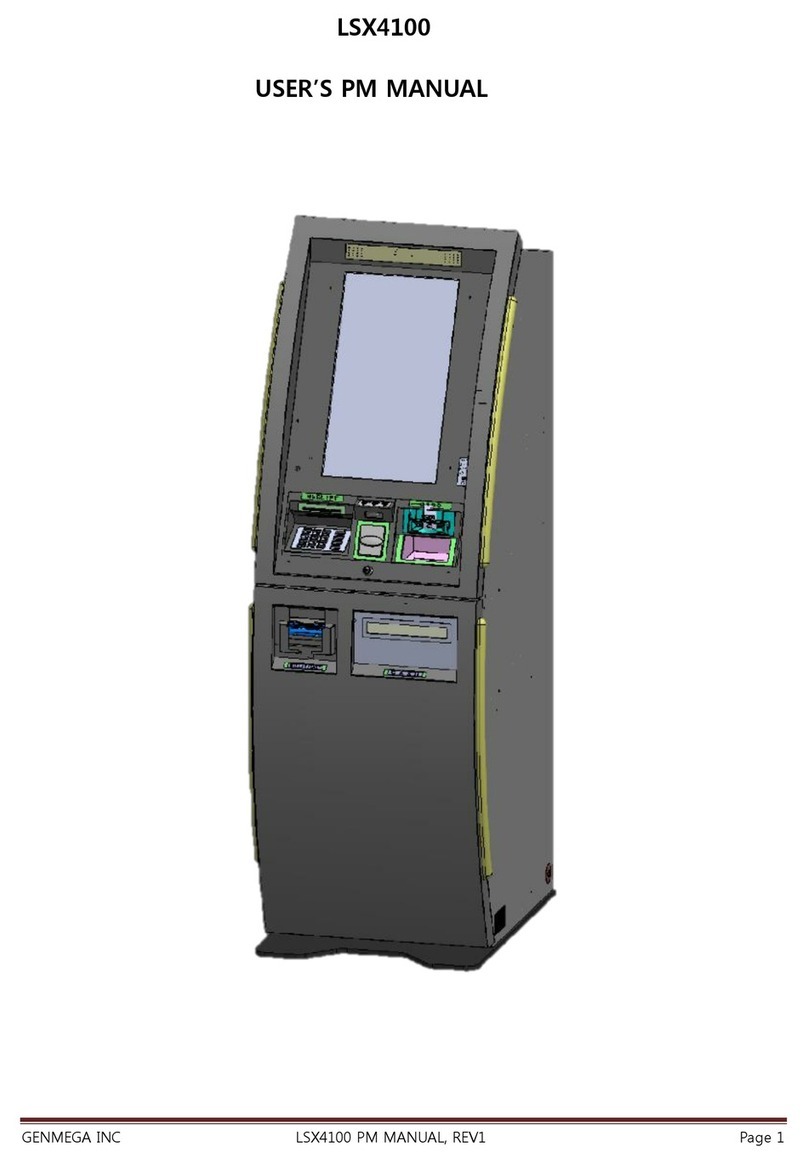
Genmega
Genmega LSX4100 user manual
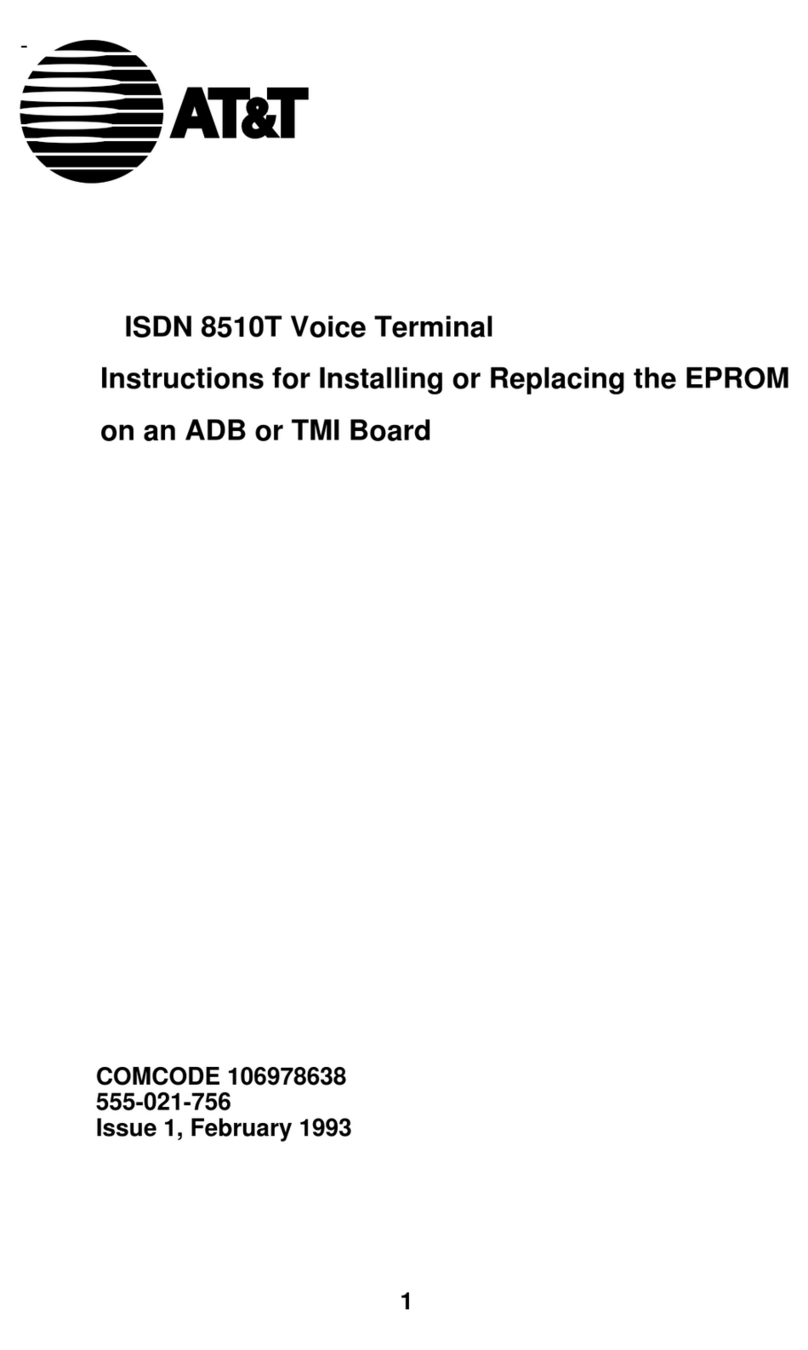
AT&T
AT&T ISDN 8510T Instructions for Installing or Replacing

DT Research
DT Research DT415 Basic operation guide
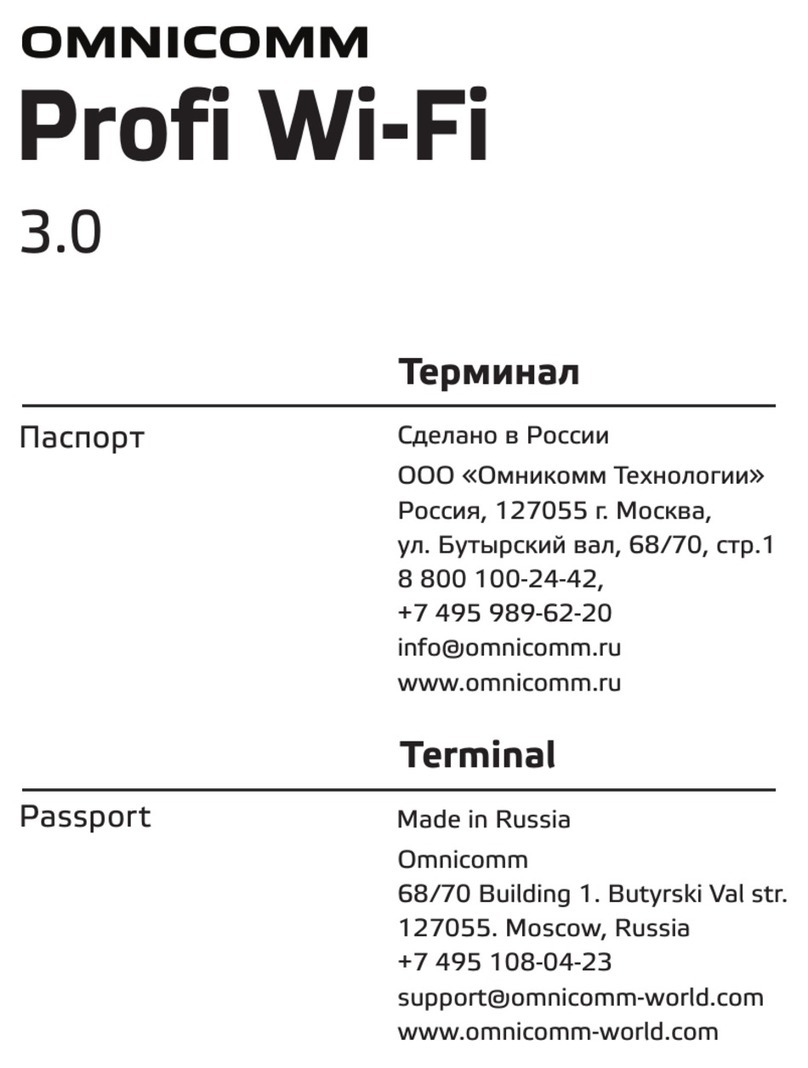
Omnicom
Omnicom Profi Wi-Fi 3.0 manual
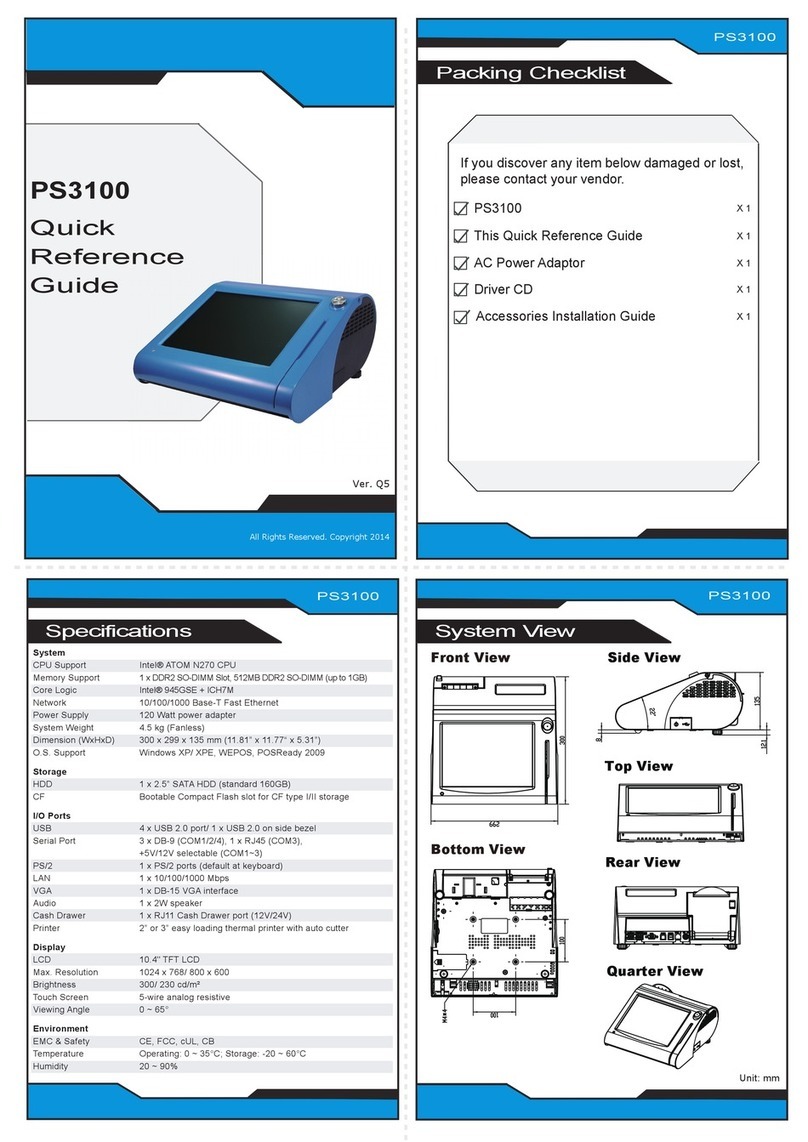
Protech Systems
Protech Systems PS3100 Quick reference guide
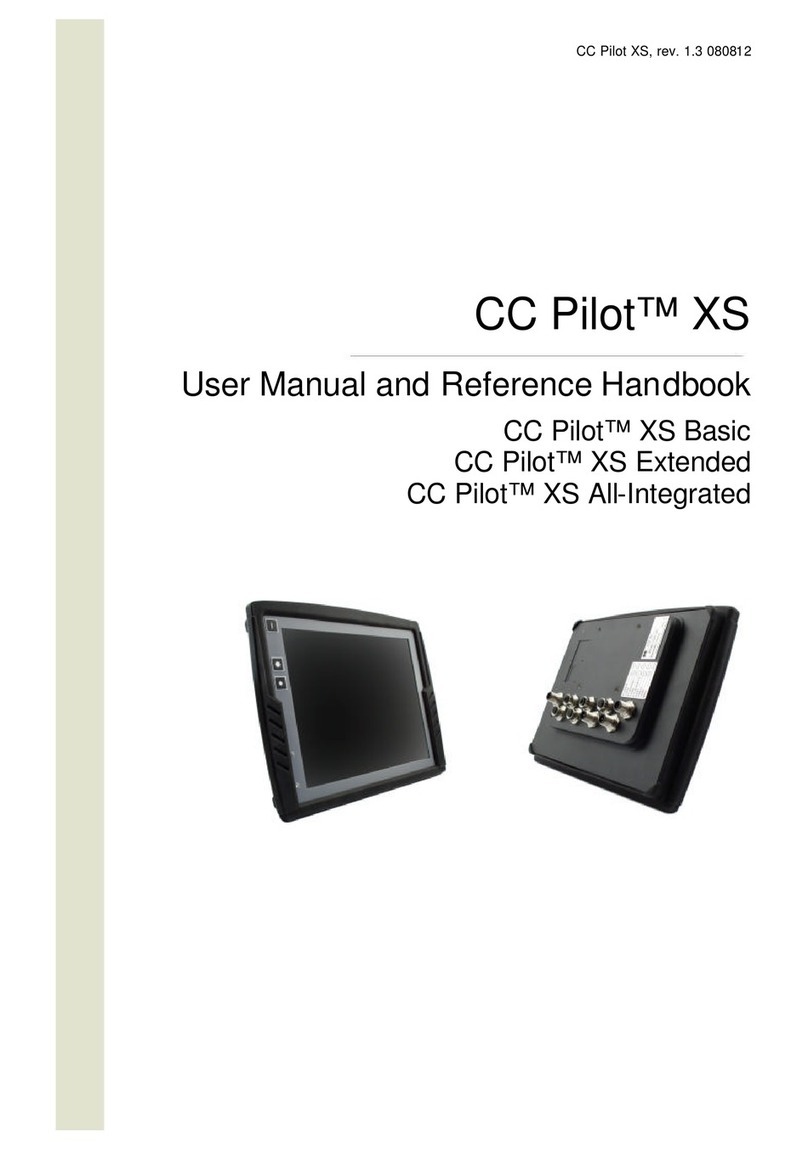
CC Systems
CC Systems CC Pilot XS Basic User manual and reference handbook

